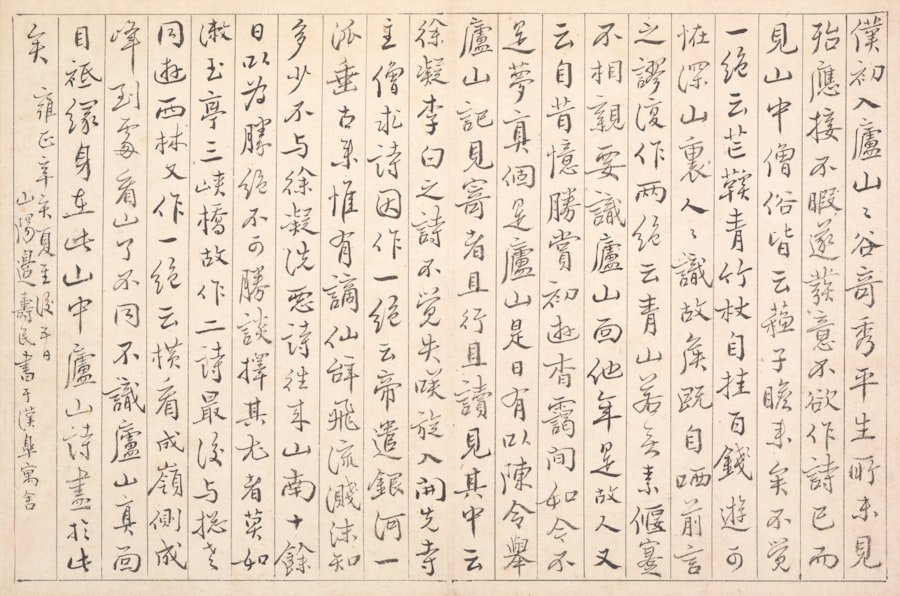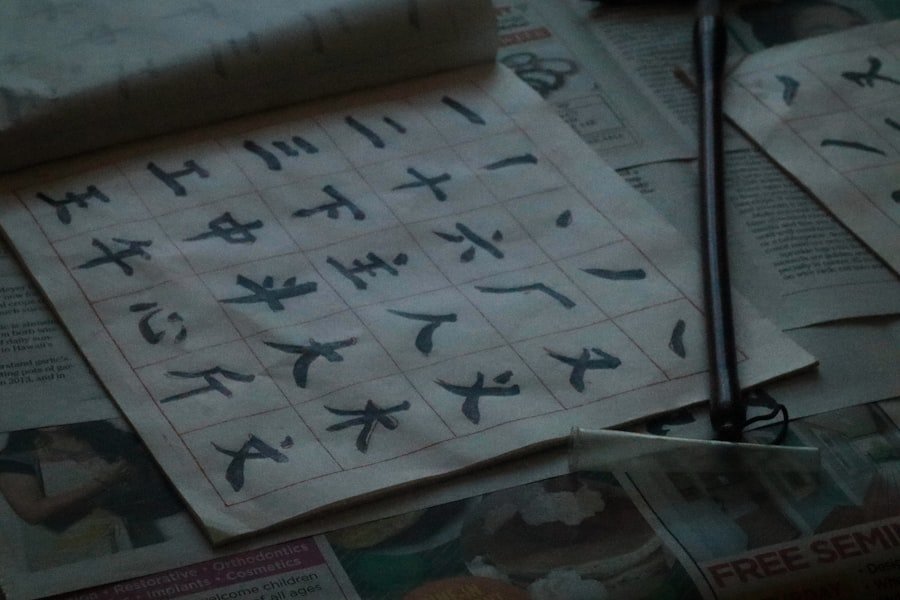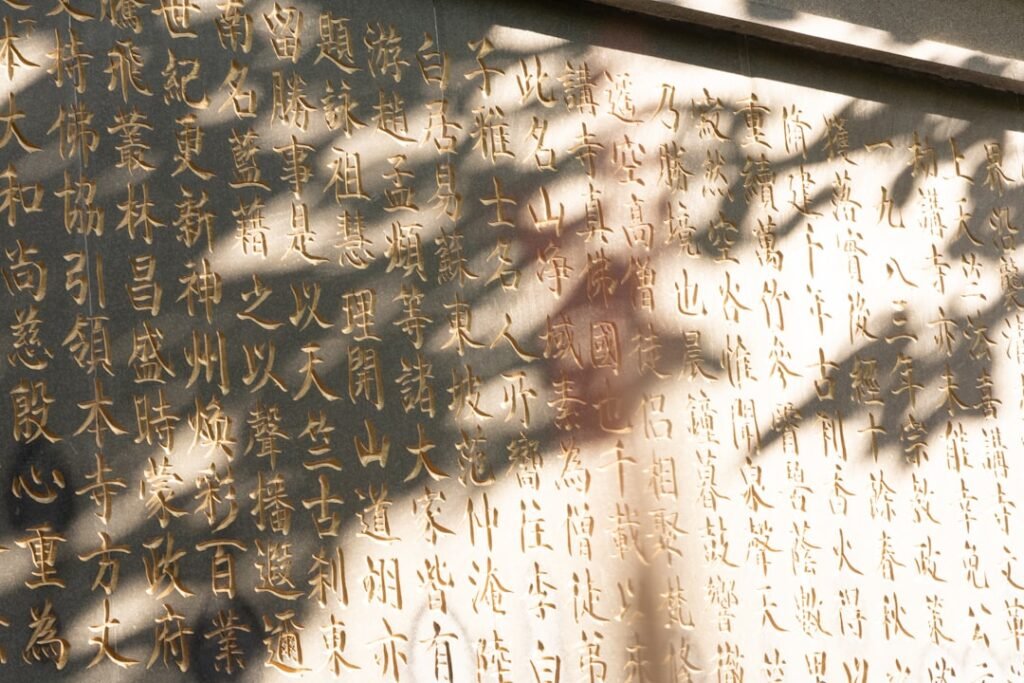In the journey of mastering Chinese calligraphy, practitioners often encounter a phenomenon known as the plateau. This stage is characterised by a period of stagnation where progress seems to halt, despite continued practice and effort. It can be disheartening for both beginners and seasoned calligraphers alike, as the initial excitement of learning new strokes and characters gives way to frustration.
Understanding this plateau is crucial for any calligrapher, as it is a natural part of the learning process. It serves as a reminder that mastery is not achieved overnight but through consistent effort and dedication. The plateau can manifest in various ways, such as a lack of improvement in stroke precision, difficulty in achieving the desired fluidity, or an inability to replicate the beauty of traditional characters.
Recognising that this is a common experience among calligraphers can help alleviate feelings of isolation and discouragement. It is essential to approach this stage with a mindset geared towards growth, viewing it not as a dead end but as an opportunity for deeper understanding and refinement of skills. By acknowledging the plateau, practitioners can develop strategies to navigate through it and emerge with enhanced abilities. Master the art of Chinese calligraphy. Enroll now at the LC Chinese School in Oslo.
Table of Contents
ToggleSummary
- Understanding the Plateau in Chinese Calligraphy: Recognise the common plateau in skill development and how it applies to Chinese calligraphy.
- Importance of Drills and Exercises in Overcoming Plateaus: Learn how consistent practice and targeted exercises can help overcome skill plateaus in calligraphy.
- Warm-up Exercises for Chinese Calligraphy: Discover the essential warm-up exercises to prepare the body and mind for calligraphy practice.
- Stroke Practice Drills for Improved Control: Master the stroke practice drills to enhance control and precision in Chinese calligraphy.
- Character Repetition Exercises for Consistency: Explore the benefits of character repetition exercises for achieving consistency in calligraphy.
Importance of Drills and Exercises in Overcoming Plateaus
To effectively overcome plateaus in Chinese calligraphy, engaging in targeted drills and exercises is paramount. These structured practices not only reinforce foundational skills but also encourage muscle memory, which is vital for achieving the fluidity and precision characteristic of beautiful calligraphy. Drills serve as a bridge between theoretical knowledge and practical application, allowing calligraphers to focus on specific aspects of their technique that may require improvement.
By incorporating regular drills into their routine, practitioners can break through barriers that hinder their progress. Moreover, exercises tailored to address particular challenges can provide a sense of direction and purpose during periods of stagnation. For instance, if a calligrapher struggles with stroke consistency, dedicating time to specific drills that emphasise control and accuracy can yield significant improvements.
The repetitive nature of these exercises fosters confidence and reinforces the connection between mind and hand, ultimately leading to a more refined and expressive style. Thus, embracing drills as an integral part of practice is essential for anyone seeking to advance their skills in Chinese calligraphy.
Warm-up Exercises for Chinese Calligraphy

Before delving into more complex characters and compositions, warm-up exercises play a crucial role in preparing both the mind and body for the art of calligraphy. These preliminary activities help to loosen the wrist, enhance flexibility, and establish a rhythm that is conducive to fluid writing. Simple warm-up exercises can include repetitive strokes such as horizontal lines, vertical lines, and circles, which serve to engage the muscles used in calligraphy while also allowing practitioners to focus on their grip and posture.
In addition to physical preparation, warm-up exercises also provide an opportunity for mental clarity. As calligraphers engage in these preliminary activities, they can centre their thoughts and cultivate a mindful approach to their practice. This mental preparation is particularly important when facing a plateau, as it encourages a positive mindset and fosters resilience.
By incorporating warm-up exercises into their routine, calligraphers can create a solid foundation for their practice, ensuring they are ready to tackle more challenging characters with confidence and poise.
Stroke Practice Drills for Improved Control
One of the most effective ways to enhance control in Chinese calligraphy is through dedicated stroke practice drills. These drills focus on individual strokes that form the building blocks of characters, allowing practitioners to hone their technique and develop a deeper understanding of each stroke’s nuances. By isolating specific strokes, calligraphers can concentrate on achieving the correct pressure, angle, and speed necessary for producing elegant lines.
Practising strokes repetitively not only improves muscle memory but also fosters an appreciation for the subtleties of each movement. For instance, mastering the ‘dot’ stroke requires attention to detail regarding its size and placement within a character. By engaging in stroke practice drills regularly, calligraphers can gradually build their confidence and precision, ultimately leading to more consistent results in their overall work.
This focused approach is particularly beneficial during plateaus, as it allows practitioners to identify areas needing improvement while reinforcing their foundational skills.
Character Repetition Exercises for Consistency
Character repetition exercises are another vital component in overcoming plateaus in Chinese calligraphy. These exercises involve writing the same character multiple times to reinforce muscle memory and improve consistency in form and style. By repeatedly practising characters, calligraphers can internalise the structure and flow of each character, leading to greater confidence when writing them in more complex compositions.
Moreover, character repetition allows practitioners to experiment with different styles and variations while maintaining focus on achieving uniformity. This exploration can lead to personal discoveries about one’s unique style while simultaneously addressing any inconsistencies that may arise during practice. As calligraphers engage in character repetition exercises, they cultivate patience and perseverance—qualities essential for overcoming plateaus and achieving mastery in this intricate art form.
Speed and Fluidity Drills for Chinese Calligraphy

While precision is paramount in Chinese calligraphy, speed and fluidity are equally important aspects that contribute to the overall aesthetic appeal of the art form. Engaging in speed drills can help practitioners develop a natural rhythm that enhances their writing flow without sacrificing accuracy. These drills often involve timed exercises where calligraphers aim to complete characters or phrases within a set timeframe while maintaining control over their strokes.
Practising speed and fluidity not only improves efficiency but also encourages a more relaxed approach to writing. When calligraphers become too focused on perfection, they may inadvertently tense up, leading to rigid strokes that lack grace. By incorporating speed drills into their routine, practitioners can learn to balance precision with fluidity, resulting in more dynamic and expressive pieces.
This balance is particularly beneficial during plateaus when frustration may lead to overthinking; speed drills encourage a more instinctive approach that can reignite creativity.
Advanced Techniques to Break Through Plateaus
As calligraphers progress in their journey, exploring advanced techniques can be instrumental in breaking through plateaus. These techniques may include experimenting with different styles such as cursive or semi-cursive scripts, which challenge practitioners to adapt their approach and think outside the box. By stepping outside their comfort zone, calligraphers can discover new ways of expressing themselves while simultaneously enhancing their technical skills.
Additionally, incorporating elements from other art forms—such as painting or ink wash—can provide fresh perspectives on composition and brushwork. This cross-disciplinary approach encourages creativity and innovation, allowing practitioners to infuse their calligraphy with unique flair. Embracing advanced techniques not only revitalises practice but also fosters a deeper appreciation for the art form itself, ultimately leading to breakthroughs that propel calligraphers beyond their current limitations.
Incorporating Meditation and Mindfulness into Calligraphy Practice
The practice of meditation and mindfulness can significantly enhance one’s experience in Chinese calligraphy. By integrating these principles into their routine, calligraphers can cultivate a deeper connection with their art while fostering a sense of calm and focus. Mindfulness encourages practitioners to be fully present during their writing sessions, allowing them to engage with each stroke consciously rather than mechanically.
Meditation techniques such as breath awareness or visualisation can help clear mental clutter and reduce anxiety associated with performance pressure during plateaus. By approaching calligraphy with a meditative mindset, practitioners can tap into their creativity more freely while also developing greater patience with themselves throughout the learning process. This holistic approach not only enriches the practice but also nurtures personal growth as artists.
Using Different Writing Tools to Overcome Plateaus
Exploring various writing tools can provide fresh inspiration for overcoming plateaus in Chinese calligraphy. Traditional brushes come in different shapes and sizes, each offering unique characteristics that influence stroke production. Experimenting with different brushes allows practitioners to discover which tools resonate best with their style while also challenging them to adapt their techniques accordingly.
In addition to brushes, trying out alternative mediums such as ink pens or markers can introduce new textures and effects into one’s work. This experimentation encourages creativity while also breaking the monotony that often accompanies plateaus. By diversifying writing tools, calligraphers can reignite their passion for the art form while simultaneously enhancing their technical skills through exploration.
Seeking Feedback and Guidance from Experienced Calligraphers
One of the most effective ways to navigate through plateaus is by seeking feedback from experienced calligraphers or instructors. Constructive criticism provides valuable insights into areas needing improvement while also offering encouragement during challenging times. Engaging with a community of fellow practitioners fosters camaraderie and support—essential elements for maintaining motivation throughout one’s journey.
Participating in workshops or classes led by seasoned calligraphers allows practitioners to learn new techniques directly from experts while also receiving personalised guidance tailored to their individual needs. This mentorship can be instrumental in identifying blind spots that may hinder progress during plateaus. By embracing feedback as an opportunity for growth rather than criticism, calligraphers can cultivate resilience and determination on their path towards mastery.
Patience and Persistence in Overcoming Plateaus in Chinese Calligraphy
Ultimately, overcoming plateaus in Chinese calligraphy requires patience and persistence—a commitment to continuous learning despite challenges encountered along the way. Mastery is not achieved overnight; it is forged through dedication, practice, and an unwavering belief in one’s potential for growth. Embracing setbacks as part of the journey allows practitioners to cultivate resilience while fostering a deeper appreciation for the art form itself.
At LC Chinese School in Oslo, we offer specialised courses that delve into the intricacies of Chinese calligraphy, providing students with structured guidance tailored to their individual needs. Our experienced instructors understand the challenges faced by learners at all levels and are dedicated to helping students navigate through plateaus with effective strategies and personalised feedback. Whether you are just beginning your journey or seeking advanced techniques to refine your skills further, our courses are designed to inspire creativity while fostering a supportive community of fellow enthusiasts.
In conclusion, overcoming plateaus in Chinese calligraphy is an integral part of the learning process that requires dedication, exploration, and an open mind. By incorporating targeted drills, mindfulness practices, diverse tools, feedback from experienced mentors, and above all—patience—calligraphers can break through barriers that hinder progress while deepening their appreciation for this beautiful art form at LC Chinese School in Oslo.
Master the art of Chinese calligraphy. Enroll now at the LC Chinese School in Oslo.







